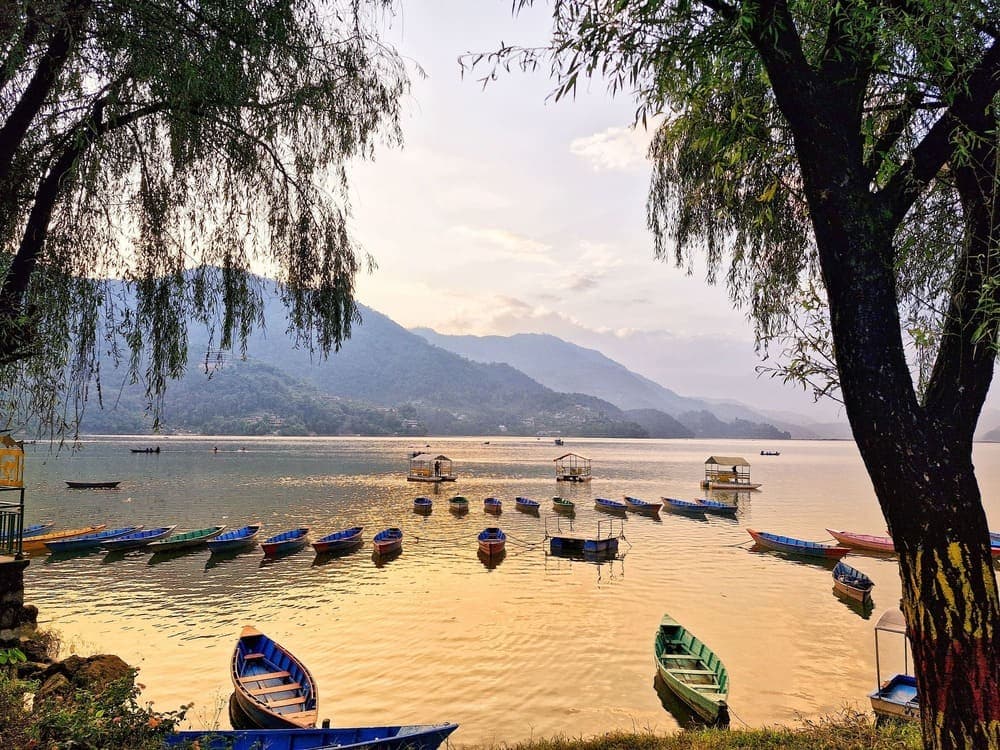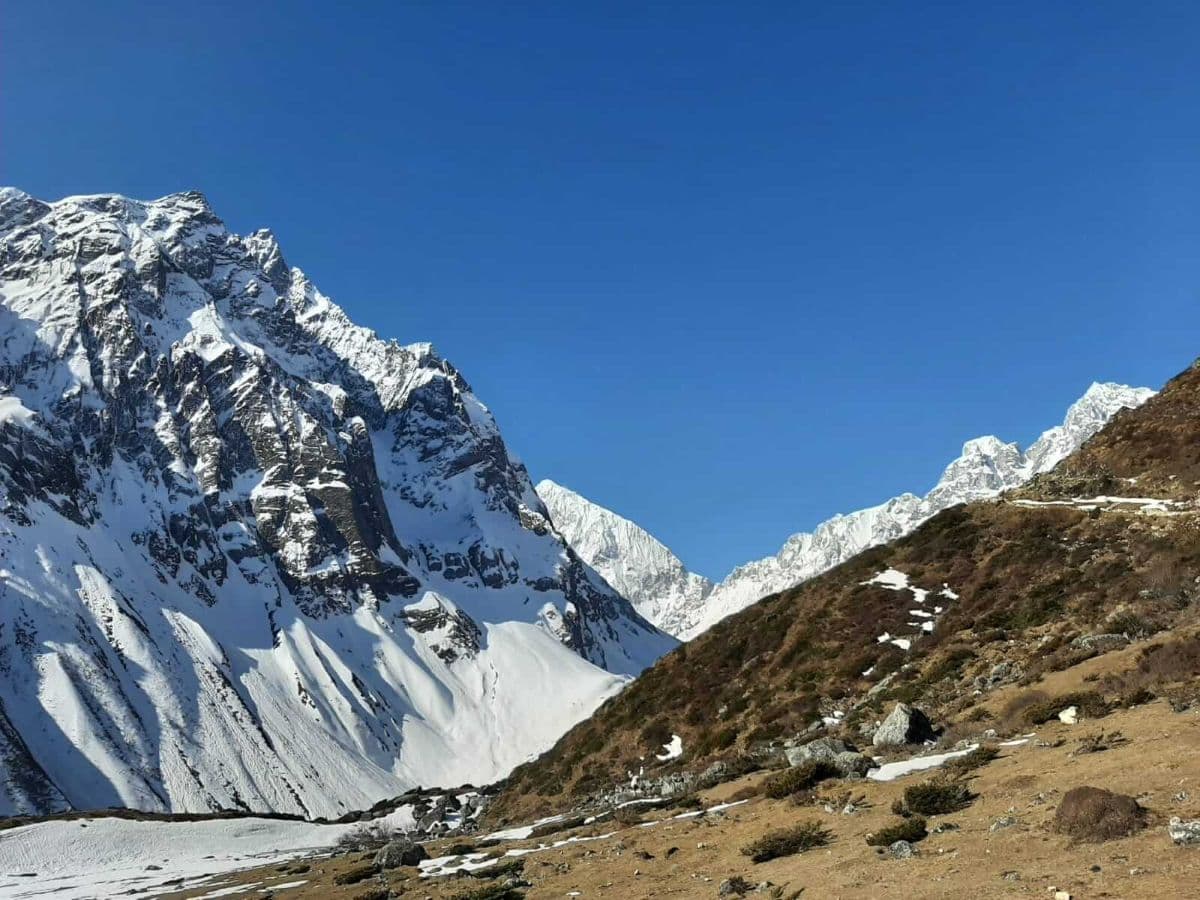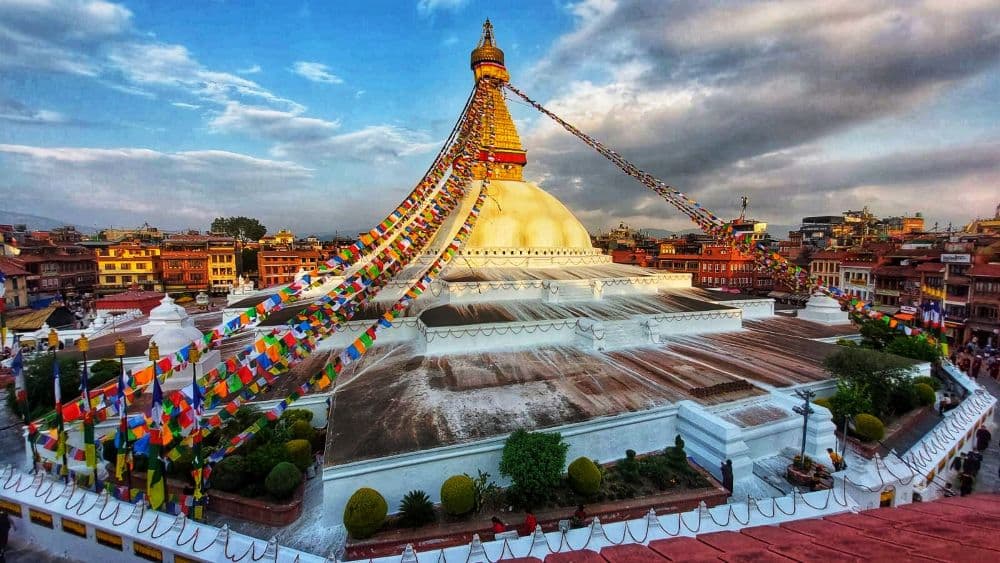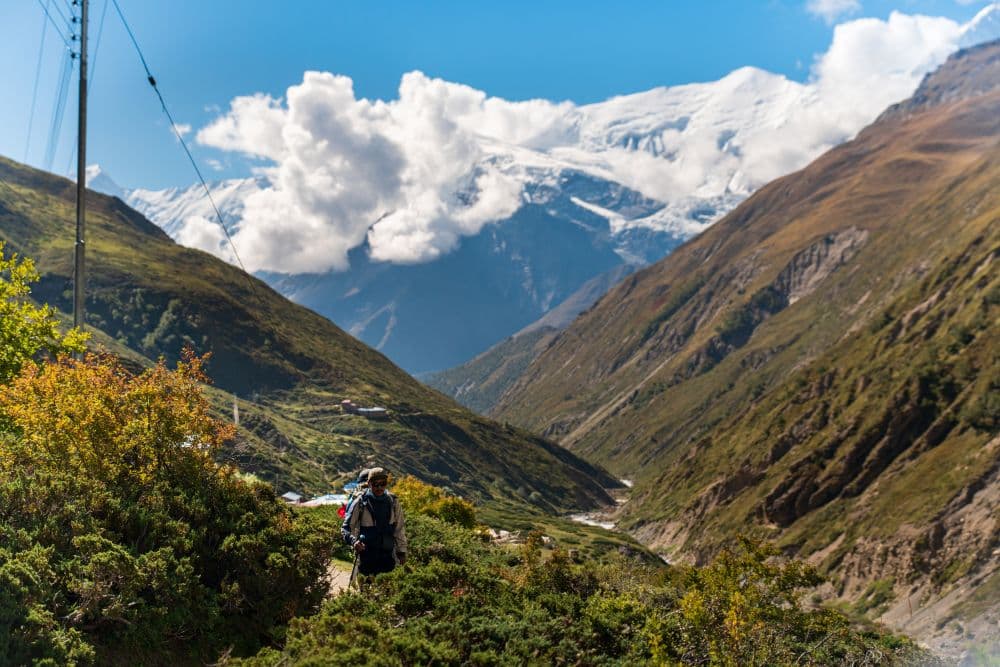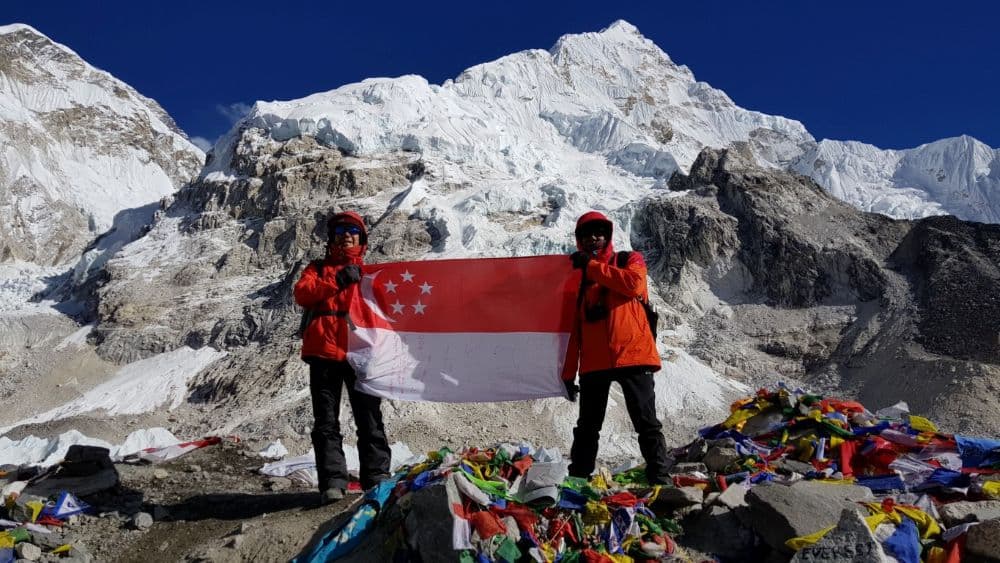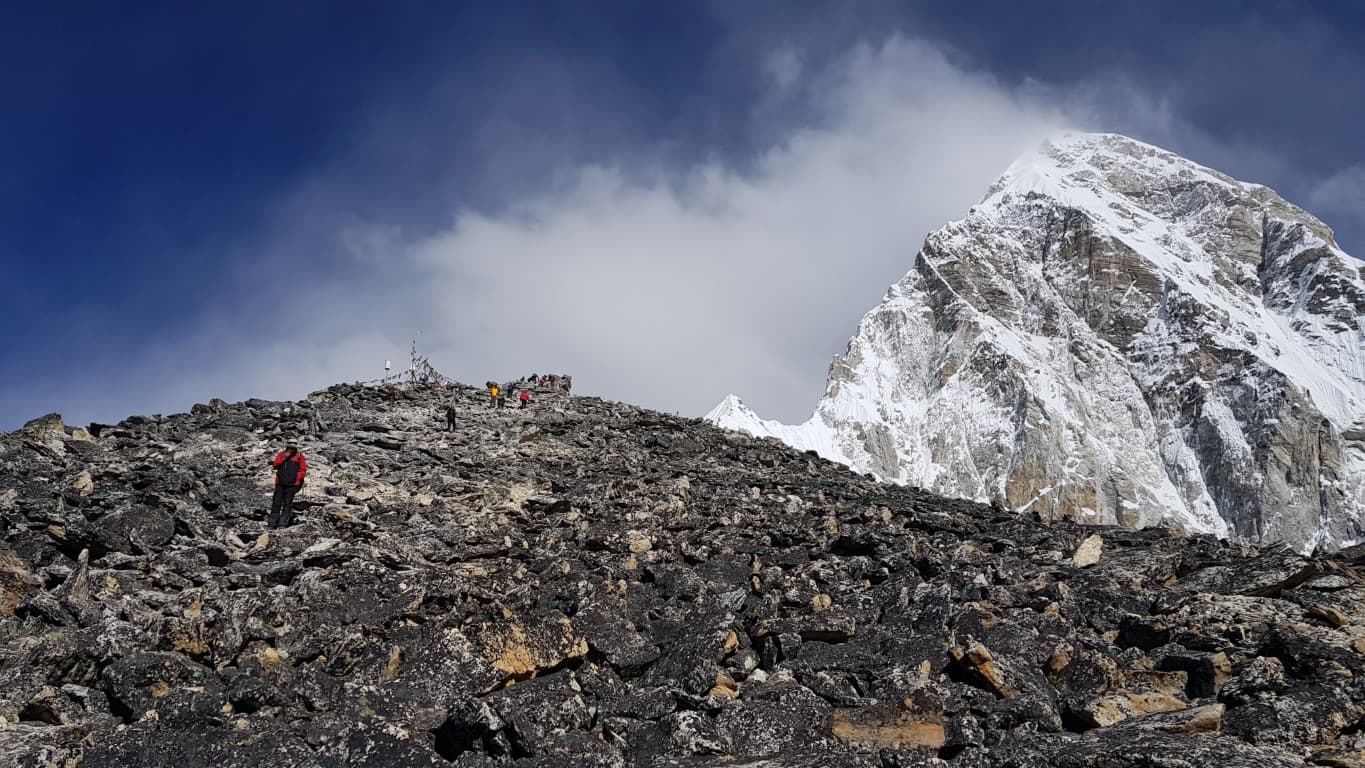
How Hard Is It to Climb Mount Everest? Challenges & Tips to Succeed
Climbing Mount Everest (8848 m) is the ultimate quest for people who can defy every odds and embrace the thrill of high altitude and extreme cold weather conditions. If you are wondering how hard it is to climb Mount Everest, then the answer is –very tough.
The highest point on Earth, Mount Everest, dares every mountaineer with extreme weather conditions, high altitude, thin air, and difficult terrain. However, if anyone dares to complete these fierce dares, then the result is unparalleled. You will be among the few who have achieved the profound accomplishment of being at the top of the world. However, overcoming such extreme challenges is not an easy job.
Whether you’re considering to trek in Nepal or aiming for the summit, this blog will break down the Everest climbing challenges and give you some essential tips to help you succeed on your journey to the top
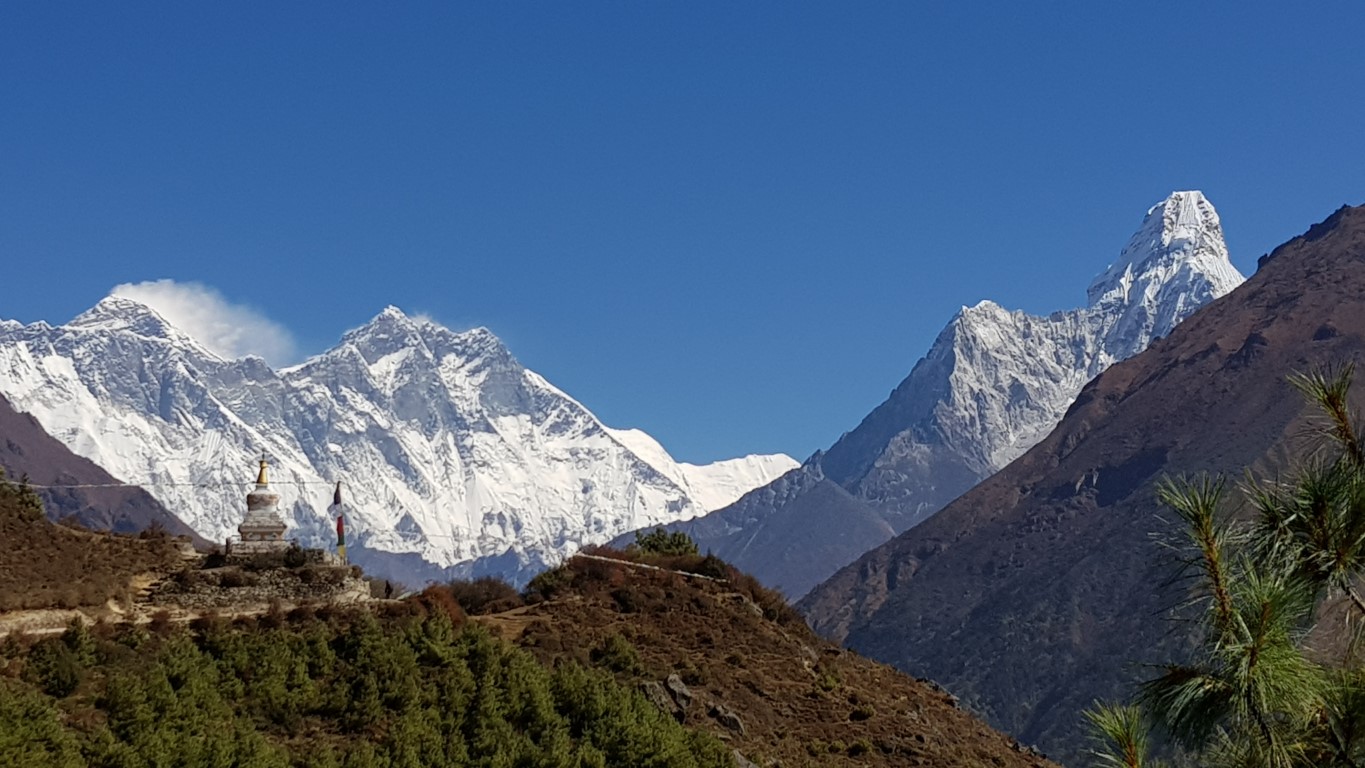
Understanding the Challenges of Climbing Everest
Climbing Mount Everest is no small feat. Indeed, the sheer height of the mountain presents extreme challenges, from intense weather conditions to the risk of altitude sickness. Here are some of the major hurdles you’ll face:
What Factors Make the Everest Climb Hard?
After knowing about the difficulty level of climbing Mount Everest, another question about the factors that make the Everest climb hard follows the minds of mountaineers. There are various factors that make the Everest climb harder than you can ever imagine.
High-Altitude Struggles
One of the most difficult obstacles climbers encounter on Mount Everest is high-altitude difficulties. When you ascend to a higher altitude, the air starts getting thinner, and the percentage of oxygen in the air gets lower.
The oxygen content of the air starts to gradually decrease as you rise above 2,500 meters. By the time you reach base camp, the oxygen percentage will decrease by 50% of the sea level. As you reach the "Death Zone" at 8,000 meters, the oxygen starts to drastically decrease. Only one-third of the oxygen present at sea level remains above 8000m. Hence, you will need additional oxygen to complete the expedition. However, most of the climbers face body malfunction and mental strain even with additional oxygen.
Extreme exhaustion, dyspnea, headaches, lightheadedness, and in extreme situations, potentially fatal disorders such as Acute Mountain Sickness (AMS), High Altitude Pulmonary Edema (HAPE), or High Altitude Cerebral Edema (HACE), are brought on by this oxygen shortage. While not all climbers may face severe cases of altitude sickness, most climbers face mild acute altitude sickness.
Extreme Weather Conditions
It is very obvious that the temperature in the Mount Everest region will be terrifyingly harsh and frigid. Even the Everest base camp’s temperature hovers around -20°C during winter. Now, you can just imagine how cold the temperature will be on Everest.
Even during the hottest month of July, the temperature will hover around -19 degrees Celsius. This temperature can drop from around -36 degrees Celsius as you ascend higher to -60 degrees Celsius at the summit of Everest. Surviving these harsh and erratic temperatures for about 60 days is one of the biggest Everest climbing challenges.
Additionally, the mountain slopes can easily be pounded by furious storms and dangerous winds. Hence, these hostile weather conditions can be life-threatening, causing medical conditions like hypothermia and frostbite. Moreover, smoke over the mountains due to cold temperatures can decrease visibility, making the climb even more challenging.
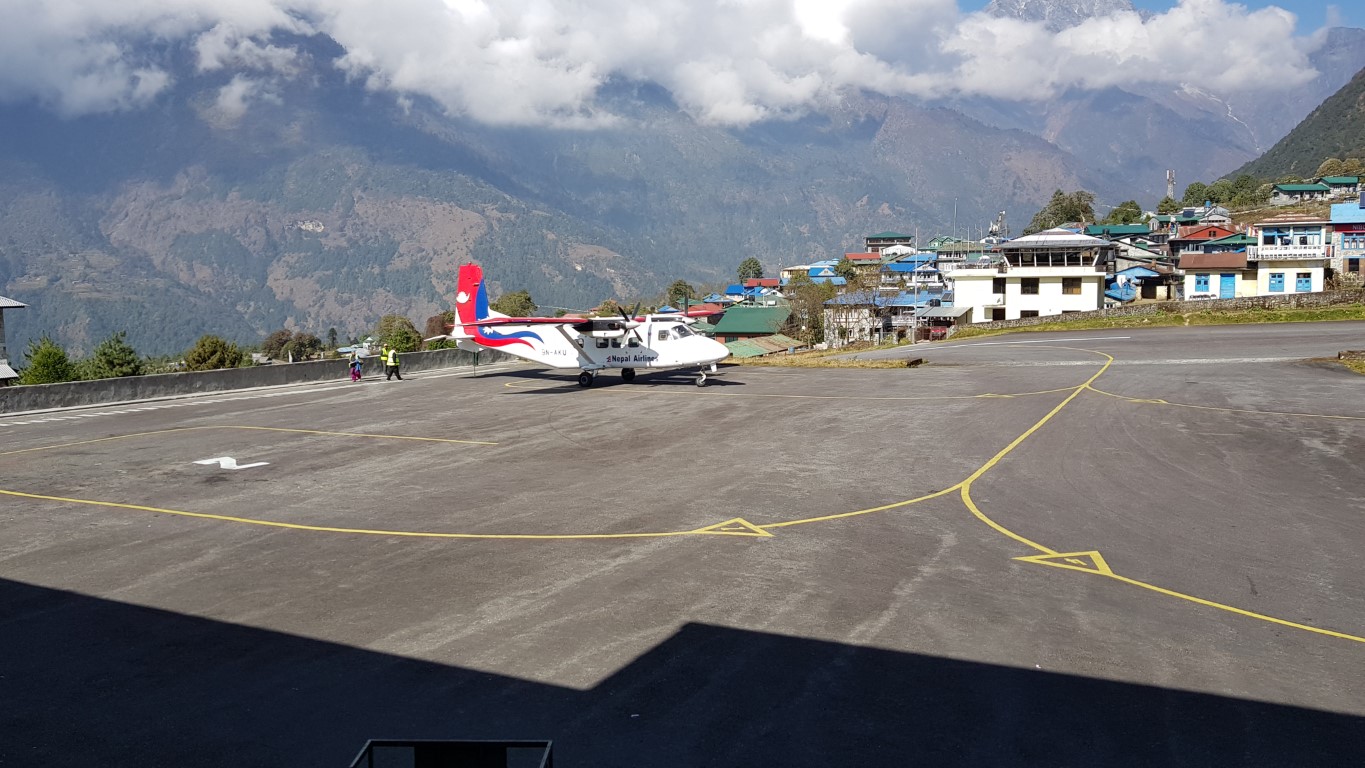
Long Duration
Climbing Mount Everest, including preparation and summit push, takes around 60 days or 2 months. It will take about 12 to 14 days to complete the Everest Base Camp trek. Moreover, if you reach the foot of Everest through the Everest base camp trek with Gokyo, it will take even more days.
At base camp, mountaineers will stay for a few days learning technical skills like ice wall climbing, ladder crossing, and other techniques that will be required for the ascent.
After acclimatizing at base camp, you will move towards Camp I. After crossing the Khumbu glacier, you will approach Camp II on a gradual slope. Likewise, after Camp II, you will climb towards Camp III at the face of Mt. Lhotse.
The deadliest journey to the summit takes you to an altitude above 7925 meters, which is also known as the “Death Zone”. The risk factor is very high, hence it takes around 2 months to complete the Mount Everest expedition.
Physical and Mental Endurance
The Everest expedition requires consistent high physical fitness and strong mental endurance. When climbers like you ascend the high altitude over more than weeks, the frigid temperature, low oxygen, and difficult terrain weaken even the strongest physical fitness. Moreover, the recovery at these high altitudes is slower than you think. The strain and fatigue while climbing for hours can easily test your core physical strength and endurance.
Furthermore, sleep deprivation, decision fatigue, altitude anxiety, and constant fear of natural hazards up in the mountains can mentally drain you to the point, you will want to give up with every footstep. Hence, your physical endurance and mental strength, if not properly trained, can be your biggest Everest climbing challenges.
Cost and Logistics
Climbing Mount Everest is quite expensive. The total cost to climb Everest can range from $35,000 to $100,000 per person. This cost includes permits, high-altitude equipment, training, hiring guides and porters, etc. Apart from cost, arranging logistics is also equally challenging. Managing acclimatization schedules, ensuring proper supplies at every camp, etc, is difficult for mountaineers and the guides and porters who are helping you throughout your expedition journey.
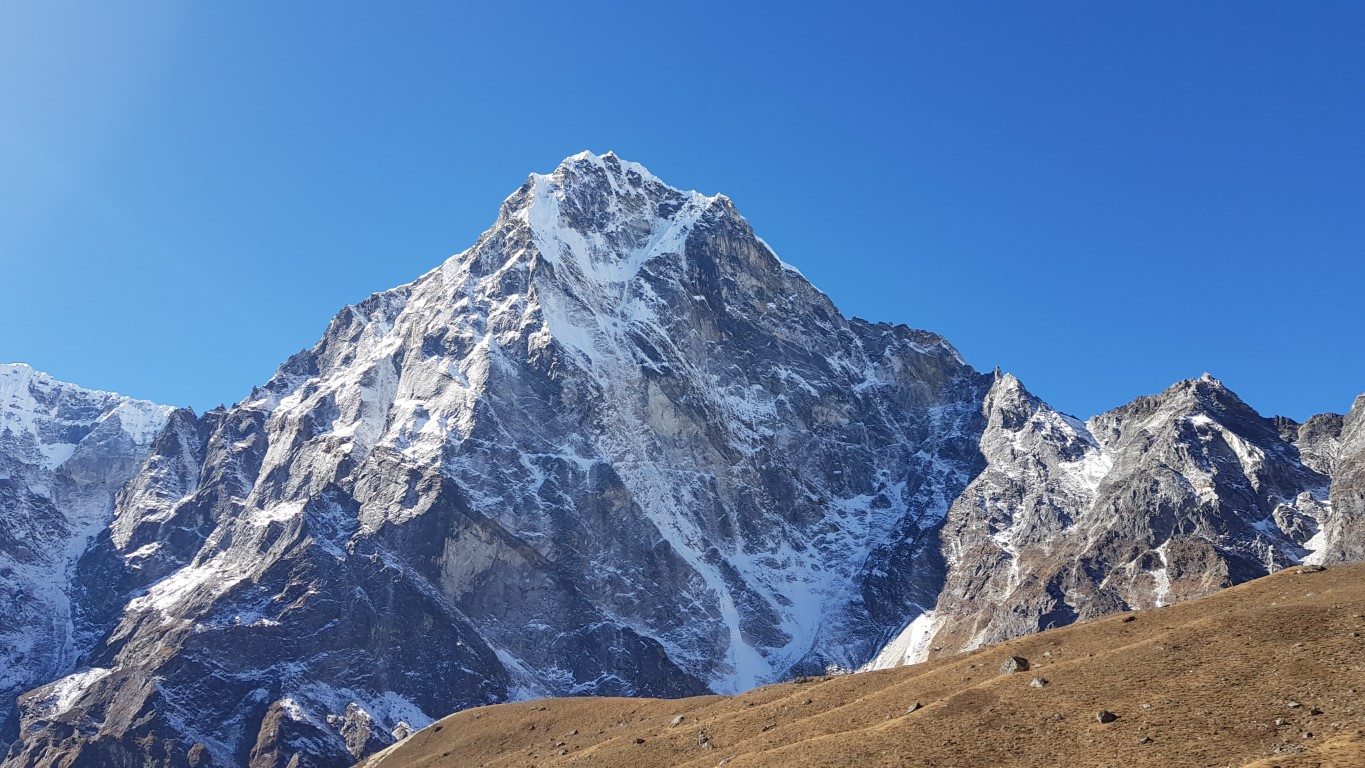
Technical Climbing Terrain
The difficult terrain is one of the biggest and most common challenges while climbing Everest. You will have to navigate through the steep ice walls, exposed ridges, steep mountain faces, and crevasses to complete the Everest expedition.
Hence, climbers need to master all the technical skills required to cope with the technical challenges on Everest. One mistake in this technical terrain can cost your life.
Avalanche
Avalanches are the most dangerous natural hazard mountaineers will face while climbing Mount Everest. Steep sections like Khumbu Icefall and Lhotse Face are more prone to avalanches. When the layers of snow, ice, or rock fall abruptly down the mountain, those fractures falling down are called avalanches. Activities like sudden changes in temperature, heavy snowfall, etc, can cause avalanches.
When avalanches fall down the mountainside, they destroy the ropes that are fixed on the route to Everest. Moreover, it can bury camps and cause serious threats to the climbers.
How to Minimize Difficulties & Improve Your Chances?
So, yes, Everest is tough, but it's not impossible with the right preparation. Now, let’s talk about how to minimize these difficulties and improve your chances of reaching the summit.
Proper Acclimation
The journey of over 2 months of climbing Everest has different phases. You will begin your journey of expedition from the base camp. Usually, you will stay at base camp for 4 to 5 days for acclimatization before you move toward Camp I. After climbing Camp I, you will stay for two nights and return back to base camp.
Then you will climb again to Camp I and further proceed to climb Camp II. This is the whole acclimatization process to adapt your body to thin air. Moreover, above camp II also you will rest as part of acclimatization but you will not be heading down and climbing again. Hence, proper acclimatization for Everest will help your body adapt by vigorously dropping oxygen as you ascend to a higher altitude and avoid altitude sickness.
Technical Skills Training
Mountaineering doesn't not only require great physical and mental fitness, but you should have many technical climbing skills to overcome the technical sections while climbing Everest. Skills like using ice axes and crampons will help in ascending and descending on the snowy surface. Likewise, most of the routes in Everest involve moving through fixed ropes. So, you will need to learn ascending and descending using ropes. Hence, mastering these mountaineering skills will increase the chance of Everest summit and returning back safely.
Preparing for Strong Physical Fitness for Everest
Pre-training for your physical fitness is a must when you are exploring a gigantic mountain like Mount Everest. First of all, you should analyze the current level of your physical strength. Then you should prepare a fitness plan including both your strengths and weaknesses.
Likewise, you can start with the basics and upgrade yourself to hardcore exercise. Hence, practicing strength training exercises, cardiovascular exercises, aerobic exercises, etc, consistently over the months will definitely help you in building exceptional physical fitness and endurance.
Preparing for Mental Endurance and Resilience
Climbers experience mental as well as physical exhaustion. Even the most resilient individuals are exhausted by the lengthy days at high elevations, frequently in frigid temperatures. They may become distracted, make bad choices, and overlook dangers as a result of their fatigue.
Hence, you have to prepare yourself in such a way that you can stay calm and composed even when you are facing the biggest challenges while climbing Everest. You can try medication, yoga, visualization, and other breathing techniques to remain focused and centered. Remember that when your body gives up, your willpower will ultimately move your foot towards the Everest summit.
Proper Gears and Equipment for Everest
Packing right for your Everest expedition is an equally important part of the preparation. You will only survive the harsh weather conditions if you pack right. The list below can provide you with a reference for the packing list for climbing Mount Everest.
Equipment
- Climbing harness
- Ascender
- Accessory cord
- Belay/rappel device
- Carabiner system
- Carabiners
- Ice axe
- Crampons
- Alpine climbing harness
- Helmet (UIAA-approved)
- Fixed rope safety devices
- Trekking poles
Footwear
- High-altitude all-in-one boot
- Camp boots
- Insulated camp booties
- Wool or synthetic socks
- Liner socks
- Trekking boots
Head
- Sun Cap
- Balaclava
- Neck gaiter
- Headlight with extra batteries (
- Climbing helmet
- Desert Cap
- Fleece hat to cover ears and head
- Snow goggle
- Oxygen mask
Face
- Sunscreen
- Lip Guard
- Glaciers glasses
Hands
- Lightweight Liner Gloves
- Softshell Gloves
- Insulated Shell Gloves
- Expedition Mittens
Body
- Short Underwear
- Baselayers Tops & Bottoms
- Long Sleeve Sun Shirt
- Softshell Pants
- Hardshell Pants
- Trekking Pants
- Insulated Synthetic Pants
- Midlayer Top
- Softshell Jacket
- Expedition Down Pants
- Down Suit
- Hardshell Jacket
- Lightweight Insulated Jacket
- Insulated Down Parka
- Expedition Down Parka
Other Equipment
- -40°F Down Sleeping Bag
- -20°F Down Sleeping Bag
- Inflatable Sleeping Pad
- 55-Liter Climbing Pack
- Foam Pad
- Water Bottles
- Water Bottle Parka
- Thermos
- Pee Bottle
- Pee Funnel (for Women)
- Trash Compactor/Contractor Bags
- Camera
- Large Duffel Bag
- Solar Panel + Power Bank (Optional)
- Toiletry Bag
- Medications & Prescriptions
Everest Climb Duration & Success Rate
If you include all the factors like arrival in Nepal, trek to Everest Base Camp, acclimatization days, and summit push, the total duration of climbing Mount Everest will take you about 6 to 8 weeks.
With the improvement in logistics, equipment, route tracking, and better weather forecasting, the success rate for the Everest expedition has improved greatly in comparison with past decades. Around 60% of people who attempt the summit actually succeed in reaching the top of the world. According to the latest data as of 2024, 12,884 people have made successful summits to the peak of Mount Everest.
What Makes the Climb of Mount Everest Difficult?
The mighty high altitude of 8848 m is already a huge feat to achieve for climbers. On top of that, the technical climbing sections make the climb more difficult. The low oxygen makes the mountaineers have a constant fear of altitude sickness. The long expedition durations and unpredictable weather make climbers push beyond their limits.
What is the Best Time for Mt. Everest Climb?
Pre-monsoon season, i.e., spring(March to May) and post-monsoon season, i.e., autumn(September to October) are considered ideal times for climbing Mount Everest. Even though the Everest weather conditions are unpredictable, these two window periods offer favorable circumstances to climb Everest. The stable weather, clear skies, and somewhat safe climbing conditions attract many mountaineers to embark on the adventure.
Tips to Climb Mount Everest
- Make sure you obtain your mountaineering permits and trekking permits
- Avoid the consumption of alcohol and cigarettes while climbing Mount Everest
- You should start training early
While making your expedition, choose a reliable expedition agency - You should know how to turn back. Do not push yourself too much. Your life is more important than the Everest summit.
- Try climbing other mountains and trekking peaks before climbing Mount Everest
Is Climbing Mount Everest Worth the Risk?
Climbing Mount Everest isn't just a physical challenge; it's a test of your body, mind, and spirit. The challenges are huge, from bad weather and lethal heights to the sheer physical weariness of going beyond your capabilities. But for people who are well-prepared and know what they're getting into, stepping to the top of the highest mountain in the world can be the best thing that ever happens to them.
Ready to take on the world’s tallest peak? Book your Everest adventure with Mountain Adventure Trekking today, and let us guide you to the top. Our experienced Sherpas and expert team will ensure you’re fully prepared for this once-in-a-lifetime journey. Contact us!

